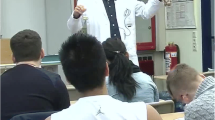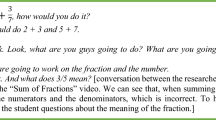Abstract
This paper reports on an experimental project in digital video editing with 10 year olds in the UK which explored their interactions with creative digital technologies. Data on the pupil’s interactions with the software was gathered on video and analysed. A theoretical framework drawn from second generation activity theory was applied and tensions resulting from mismatches between pupil’s approaches to the task and the ways the task were framed are reported on. The paper argues that pupils exhibit a number of behaviour based roles in relation to the technology dependent on compliance with the instructions of the teachers, creativity and their desire to explore the affordances of the technology. The paper concludes by asking questions about how new forms of cultural production such as digital video work can be incorporated authentically into school settings, and how a pedagogy to support learning with new types of technology can be developed by drawing on insights provided by socio-cultural approaches to understanding technology use in human activity systems.
Similar content being viewed by others
Explore related subjects
Discover the latest articles and news from researchers in related subjects, suggested using machine learning.References
BECTA (2005) Digital Video: City of Norwich Secondary School. [online] Available: http://www.ictadvice.org.uk/index.php?section=tl&rid=1874&rr=1&catcode=as_cm_del_03. Date accessed 4/02/2005.
Birmingham, P., Davies, C., and Greiffenhagen, C. (2002) Turn to face the bard: Making sense of three way interactions between teachers, pupils and technology in the classroom. Education, Communication and Information 2(2/3), 139–161.
Bottino, R. et al. (1999) Activity theory: A framework for design and reporting on research projects based on ICT. Education and Information Technologies, 4(3), 281–295.
Buckingham, D. and Harvey, I. (2001) Imagining the Audience: Language, creativity and communication in youth media production. Journal of Educational Media, 26(3), 174–184.
Burn, A. and Parker, D. (2001) Making your mark: Digital inscription, animation, and a new visual semiotic. Education, Communication & Information, 1(2), 155–179.
Cole, M. and Engeström, Y. (1993) A cultural–historical approach to distributed cognition. In Distributed cognitions: Psychological and Educational Considerations G. Salomon (ed.), Cambridge University Press, New York (pp. 1–46).
Crook, C. (2001) The social character of knowing and learning: Implications of cultural psychology for educational technology. Journal of Information for Teacher Education, 10(1/2), 19–35.
DfES (2005) ICT at key stages 1 and 2. [online] Available: http://www.standards.dfes.gov.uk/schemes2/it/itx6a/?view=get. Date accessed 4/2/2005
Downes, T. (1999) ‘Children’s participation in evaluating the role of new information and communication technologies in schools. Education and Information Technologies, 4(3), 331–341.
Ellis, V. and Long, S. (2004) Negotiating Contrad(ICT)ions: Teachers and students making multimedia in the secondary school. Technology, Pedagogy and Education, 13(1), 11–27.
Eddy Spicer, D. and JUANG, J. (2001) Of Gurus and Godfathers: Learning design in the networked age. Education, Communication & Information, 1(3), 325–358.
Lankshear, C. (2003) The challenge of digital epistemologies. Education, Communication and Information, 3(2), 167–186.
Lim, C. P. and Hang, D. (2003) An activity theory approach to research of ICT integration in Singapore schools. Computers in Education, 41, 49–63.
Matthewman, S. and Triggs, P. (2004) Obsessive compulsive font disorder: The challenge of supporting students’ writing with the computer. Computers and Education, 43, 125–135.
Somekh, B. and Mavers, D. (2003) Mapping learning potential: Students’ conceptions of ICT in their world. Assessment in Education-Principles Policy and Practice, 10(3), 409–420.
Thurston, A. (2004) Promoting multicultural education in the primary classroom: Broadband video conferencing facilities and digital video. Computers and Education, 43, 165–177.
Walker, R. (2002) Case Study, Case Records and Multimedia. Cambridge Journal of Education, 32(1), 109–127.
WHATIS?COM (2004) Definition of Futzing. [online] Available: http://whatis.techtarget.com/definition/0,sid9_gci212171,00.html. Date accessed 1st May 2004.
Author information
Authors and Affiliations
Corresponding author
Rights and permissions
About this article
Cite this article
Pearson, M. Splitting Clips and Telling Tales: Students Interactions with Digital Video. Educ Inf Technol 10, 189–205 (2005). https://doi.org/10.1007/s10639-005-3000-0
Issue Date:
DOI: https://doi.org/10.1007/s10639-005-3000-0




